The warmth of the sun, the wind in hair, and a good book to read, my voyage to Lombok was filled with sunny days, and warm breezes.
The short geographical distance between Bali and Lombok can hardly represent the actual differences between these two islands. Lombok has a drier, more arid environment, and having crossed the invisible Wallace Line, the flora and fauna are different from Bali which makes visiting the island much more intriguing.
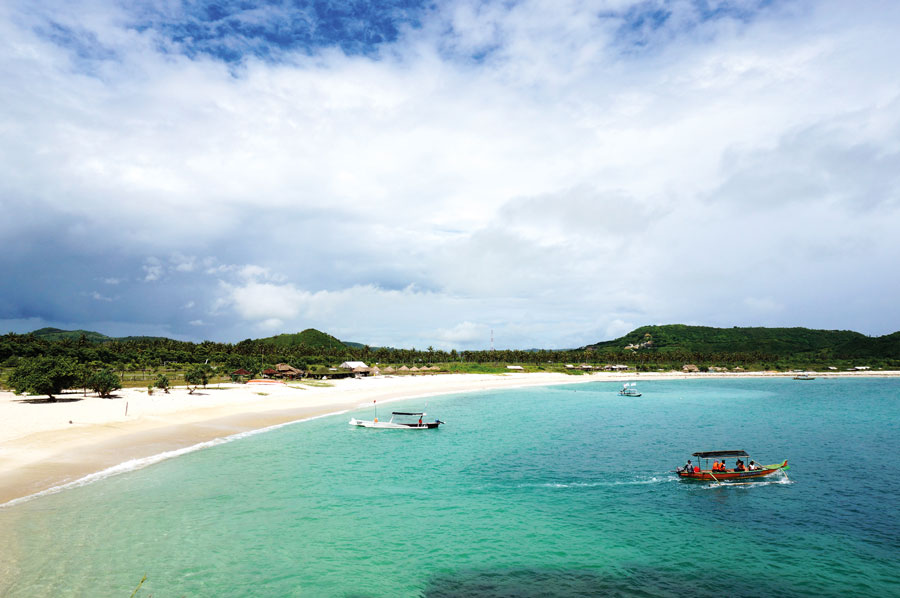
Travel brochures advertise Lombok as “the way Bali was 30 years ago,” in theory untouched and unspoiled. I remember arriving in Lombok four years ago at Teluk Kodek, an area in the northern part of the island surrounded by swaying palm trees and sleepy villages. I took the scenic route down to the touristic Senggigi, entertained by the bird’s eye view of the beaches below, passing beachfront empty lands with signboards saying “For Sale” as I approached Senggigi.
Last month, I arrived at the same spot, noticing that some parts of the natural sandy floor just steps away from the jetty has been layered with paving blocks, making it easy for motorbikes and cars to access the small seaport. Obviously things have changed since the last time I visited the island; so I could only wonder what had happened to those empty lands on the way to Senggigi.
But I decided to not go the same road as the last time, and instead made my first Lombok stop at a traditional market in Medana, near the area called Tanjung, eastward of Teluk Kodek. At first glance, the traditional market appeared to be a bewildering and disorganised mess, with no clear order to the way the stalls were arranged. And for this, it makes a great traditional market to wander around and feast your eyes on the enchanting, unspoilt culture. The items sold at the market were numerous: meat, fish, fruit, vegetables, spices, household items, and even clothes. Many traders simply placed their goods on blankets on the ground, some in the middle of the sidewalks. Ranks of the horse-drawn carts, locally known as cidomo, lined the sides of the market, giving it a more authentic Lombok feel.
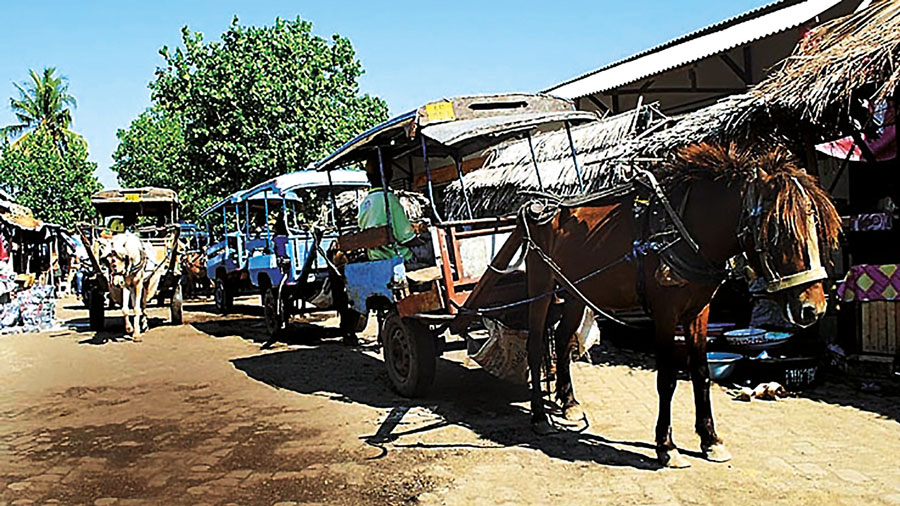
Then again, what intrigues me the most is the island’s tribal people that call Lombok their home, the Sasak people, and to witness a bit of their life in their small villages. And the first Sasak village I visited was Sukara, a village known for its weaving culture. A local guide took me in to the villager’s houses and showed me the entire process of the weaving: growing the cotton, spinning the thread, brewing the natural dies, and weaving on the looms. Even more interesting about Sukara is the village’s tradition that necessitates a young woman to be able to master all parts of the process to later weaves her own bridal cloth. If she fails to do this, then she cannot get married.
Nothing can thrill me more than exploring cultures and exotic destinations, and my first two stops really did quench my thirst for the adventure. And after feasting my eyes on the unique humble beauty that is Sukara, I took the road back towards Teluk Kodeks direction, passing the same area as I did two years ago. The area was still relatively empty, but quite a number of the “For Sale” signboards were gone – but by the looks of it, new beachfront and ocean view hotels are coming soon to the area.
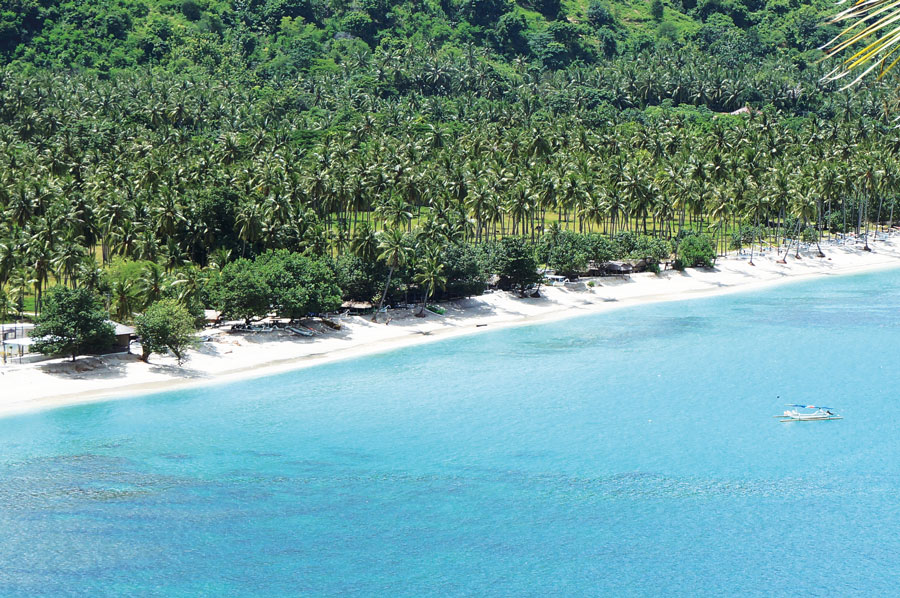
I made a quick stop at a “sunset point” in Malaka, halfway from Teluk Kodek to Senggigi. From here I could see the distant, famous Gili Air, Gili Trawangan, and Gili Meno, as well as crystal clear waters below. A fresh, cold coconut water made my stop even more pleasant – it really helps ease the heat of the Lombok sun.
My journey continued to Sade, another Sasak tribal village in Lombok. Sade isn’t really an isolated tribal enclave cut off from the outside world but rather a living traditional village struggling to survive in the modern world. The villagers supplement agricultural income by selling their weavings and showing visiting tourists around their beautiful hilltop village. I was quite pleasantly surprised at how respectfully organised and well thought out the short guided tour of Sade was; visitors are not allowed to wander around the village on their own poking their heads into people’s houses or interrupting the village life.

I was greeted by a volunteer guide, a local Sade villager, working for modest donations who led me through the village. Upon entering the village, I signed a guestbook and was asked for a small contribution towards the maintenance of the village. After that I was led through the village’s narrow cobbled paths, showed examples of local houses, a thatched mosque, and the rice barns. I immediately noticed that all of Sade’s roofs were thatched. Thank goodness those donations to the village seemed to be well spent as the village always replaces broken roofs using the fund.

The thatched-roof houses were beautifully lined with an adobe stucco of mud and cow manure. That may sound gross, but if you’ve traveled that much you might know that magic adobe mixture is used the world over to create stunningly smooth moulded floors, walls, platforms and benches. The architecture was full of fascinating details including a strange wall decoration made with dried fish tails. Moving on through, I was able to glimpse a bit of Sasak daily life. Spinners spun yarn; weavers wove colourful lengths of cloth; kids skipped along the paths while the elderly lay out under the shady rice barns; the occasional goat or chicken wandered by.
Sade was quite an interesting short side trip while in southern Lombok, especially for people who may not be moving further east in Lombok. I was both quite impressed at the respectful setup and the thought put into preserving village architectural integrity as well as a traditional atmosphere.
Moving on, my thirst for adventure led me to Kuta Beach, also on the southern part of the island. Not to be confused with its trendy cousin in Bali, this Kuta is a quiet little stretch of sand in an isolated cove. But different from the Kuta Lombok I visited two years ago, you can now find ranks of homestays along the area – herds of buffalo munching on the grass are still there, though. Hawkers on the beach, who are mostly children, can be a bit pushy at times, offering you to buy bracelets, necklaces, and other souvenirs. You can always say no them if you’re not interested, just do it politely.
To the west of Kuta are a series of beautiful beaches and bays hidden behind headlands and rolling hills, providing peaceful and secluded spots for picnics and swimming. This area also provides plenty of opportunities for exploring beaches and coastal scenery of breathtaking beauty.
To the south, you’ll find the pristine white-sand beach of Tanjung Aan. Sun worshippers will definitely find their paradise here, for the long-stretched, white-sandy beach provides the perfect playground they long for to achieve that equal perfect tan. The area is surrounded by picturesque hills, with one that can be easily accessed for you to enjoy the 360-degree view of the stunning natural green and blue surroundings. But when the sun finally gets to you, you can rent a wooden umbrella with braided straw roof to cool off. On the beach you can have cold drinks and fresh coconuts from the local vendors, or go to the rows of restaurants in the area for some tropical lunch.
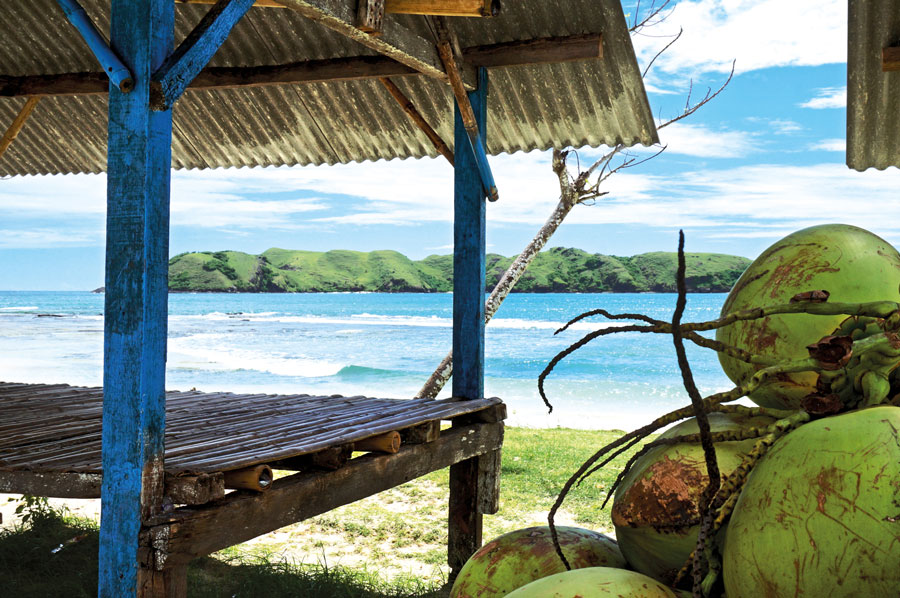
Anyway, the drive down to the south coast is an interesting rural tour of small villages and farming communities. You can observe fields of tobacco, corn and peanuts that line the roadsides and farmers till the fields using antiquated ploughs pulled by large water buffalo. If you’re lucky, you’ll run into a group of locals dressed up to the nines in their traditional attire.
Hours later, I found myself back in Senggigi, counting down to the last light of the day. Both the residents and tourists alike flock the Senggigi Beach pre sunset time, with local children swimming and diving from the high-platformed jetty into the sea. There are beach front restaurants, especially in the area of Senggigi Art Market, where you can have cold beers or just coffee, whilst observing the sun slowly and gracefully sink into the horizon.
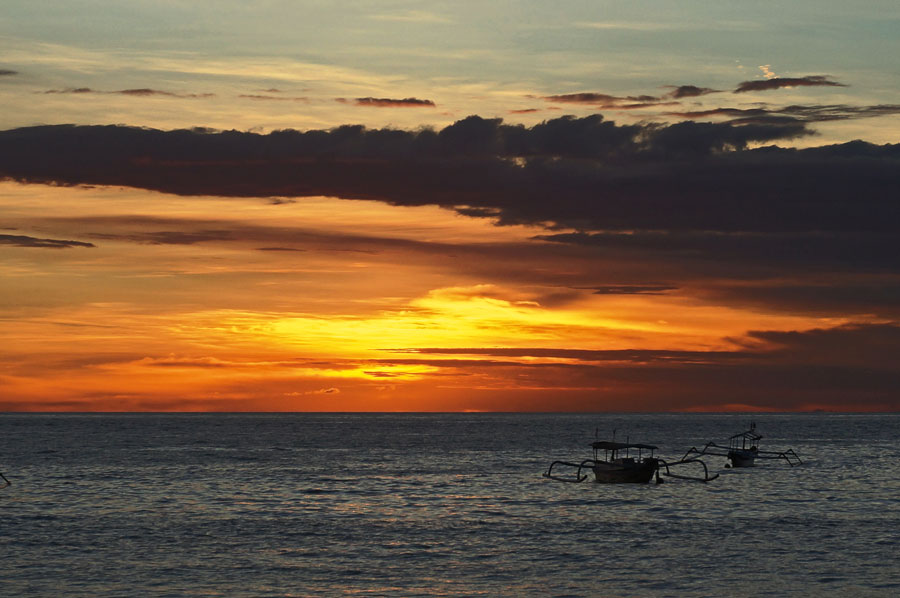
Restaurants offering international menus can be found along the main road or inside the beach resorts and hotels here. Some old hotels and beach resorts seemed to have gone through renovations, with some others taken over by new management and given new names.
But you should go to the capital city of Mataram to really get a glimpse of the local nightlife in Lombok. In addition to the mushrooming coffee shops, Mataram is now filled with a number of parks, providing a visual appeal for visitors and especially residents. At night time, these parks, such as Taman Sangkareang, beam with lights, creating a gathering space especially for the locals to kick back and relax.
Street food is one of the main attractions at the parks. Offering local delicacies, you can find food carts lining the parks across Mataram. Children, too, can have an enjoyable time, for there is normally a dedicated area for the little ones to play, whilst the adults indulge in the sumptuous steamed corn (a favourite amongst the locals). If you’re not adventurous enough, you can skip the street food and head to the nearby restaurants to sample Lombok’s famous Ayam Taliwang (spicy grilled or fried chicken served with rice).
Significant road and sidewalk improvements have taken place in Mataram, making exploring the city at night time on foot a convenient affair. In addition to the parks, the Mataram mosques make an interesting attraction to visit at night time. The Islamic Centre of Mataram as an example; this landmark is showered with colourful lights once the sun has set. The centre was built to promote pilgrimage tourism. Bearing a 99-metre high tower, you can climb up the centre and enjoy the bird’s eye view of Mataram.
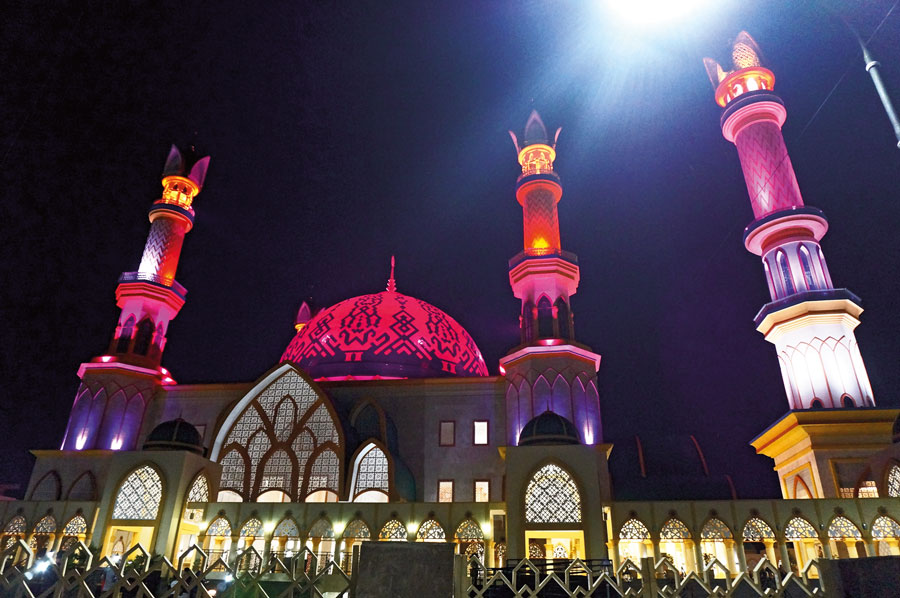
With lands being sold to hospitality managements and realtors, it seems that Lombok is gearing up to lure more visitors and compete with the neighbouring Bali. It’s true that Lombok is still quite unspoiled by tourism. However, with the rise of demands for improved infrastructure to accommodate the surge of tourists, this could mean Lombok’s old-time charm may not last forever. After all, do we want Lombok to be the next Bali, a mix-bag of tourism projects?
TRAVEL TO LOMBOK
Daily flights from I Gusti Ngurah Rai International Airport in Bali to Lombok International Airport are offered daily by Garuda Indonesia, Citilink, Wings Air, and Lion Air. The airport is located 15 minutes away from Kuta, but a bit further out from the centre of the tourist hub in Senggigi.
For a convenient arrival point in Lombok, you can travel by sea using fasboats. One fastboat service that has been known to offer comfort, safety, and punctuality is Bluewater Express. Well-situated in Serangan, those traveling from South Bali can easily reach this departure point, especially since Bluewater provides pickup/transfer to and from your hotel. If you’re staying in the Candidasa area, BlueWater transits at the Padang Bai seaport.
BlueWater Express
Address : Jalan Tukad Punggawa, Br. Ponjok, Serangan, Denpasar
Telephone : +62 361 895 1111
Website : www.bluewater-express.com
SLEEP IN LOMBOK
Treat the whole family to a fun-filled holiday in traditional Sasak style at Novotel Lombok Resort & Villas. Located only 20 minutes from Bandara International Lombok – Lombok’s international airport, Novotel Lombok overlooks the beautiful white sand and turquoise bay of Kuta beach. Featuring 102 beautiful rooms, suites, traditional Sasak and private pool villas set amongst tropical lush gardens, Novotel Lombok is the essence of relaxation and tranquility. All 77 superior and deluxe rooms are beautifully appointed using local textures and modern design. The resort also offers 10 traditional Private Sasak Villas, 5 Garden Pool Villas and 10 exclusive Private Pool Villas in 1 or 2 bedroom configuration.
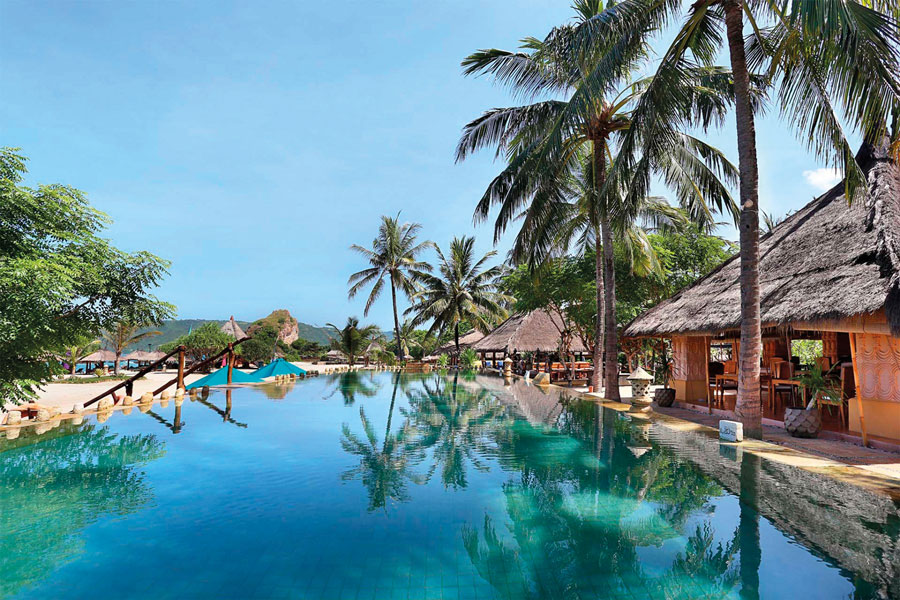
Novotel Lombok
Address : Pantai Putri Nyale, Pujut Lombok Tengah, Kuta
Telephpone : +62 370 615 3333
Website : www.novotellombok.com







